| Weight | 150 g |
|---|---|
| Dimensions | 100 mm |
| Focal Length (mm) | |
| Max Aperture (f) | |
| Aperture Blades | |
| Elements | |
| Sharp (Near) | |
| Sharp (Far) | |
| Rear Mount | |
| RF/L Extension (mm) | |
| Flange-Focal Distance (mm @ ∞) |
Kodak Projection Ektanon 100/3.5 [V1]
Bakelite slide projector lens marked ‘4 inch’ fitted with Kodak worm gear. Marked 689029 on rear housing. Fitted to Kodak 500.
Category: Slide Film
Reviews
Add a review Cancel reply
Related products
-

Aldis Tele-Projection 250/3.5
Compare -

Benoist Berthiot 90/2.8
Compare -

Aldis Anastigmat 85/2.5 [V1]
Compare -

Arsenal Triar-3 85/2.8
Compare -

Bell & Howell Trionar 127/4
Compare -
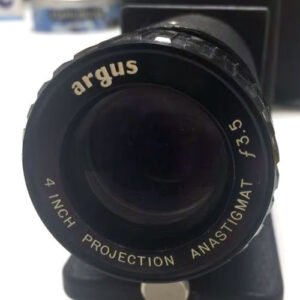
Argus Projection 100/3.5
Compare -

Arsenal Triar-1 150/3.5
Compare -

Agfa Variomar 80-125/3.1
Compare -

Braun Color-Autogon 85/2.8
Compare -
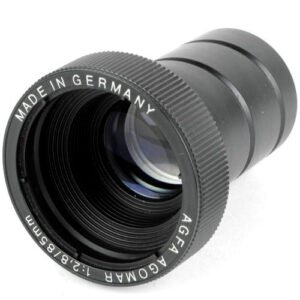
Agfa Agomar 85/2.8 [V4]
Compare -

Agfa Agomar 85-150/4
Compare -

Aldis Anastigmat 152/4
Compare -

Ansco 127/3.5
Compare -

Benoist Berthiot 110/2.4
Compare -

Agfa Agomar 85/2.5 [V1]
Compare -

Agfa Color-Agolar 85/2.8
Compare -

Bauer Neovaron 80/2.8
Compare -

Agfa Agolar 85/2.5
Compare -

Aldis Projection 100/3.2
Compare -
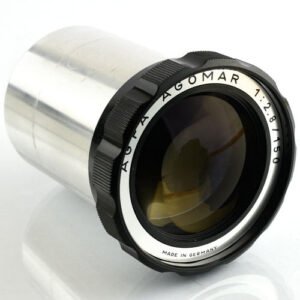
Agfa Agomar 150/2.8 [V2]
Compare -

Agfa Agomar 90/2.4
Compare -

Argus Projection 100/2.8
Compare -

Apollo 85-150/3.5
Compare -

Bell & Howell Trionar 100/3.5
Compare -

Aldis Uno 200/4.5
Compare
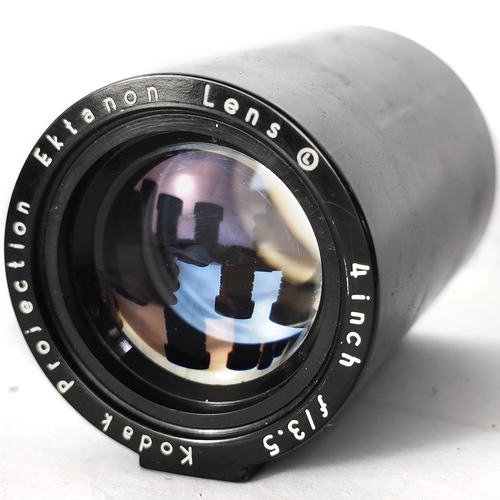
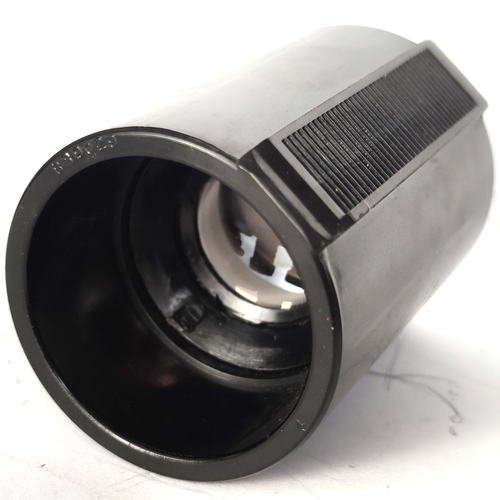
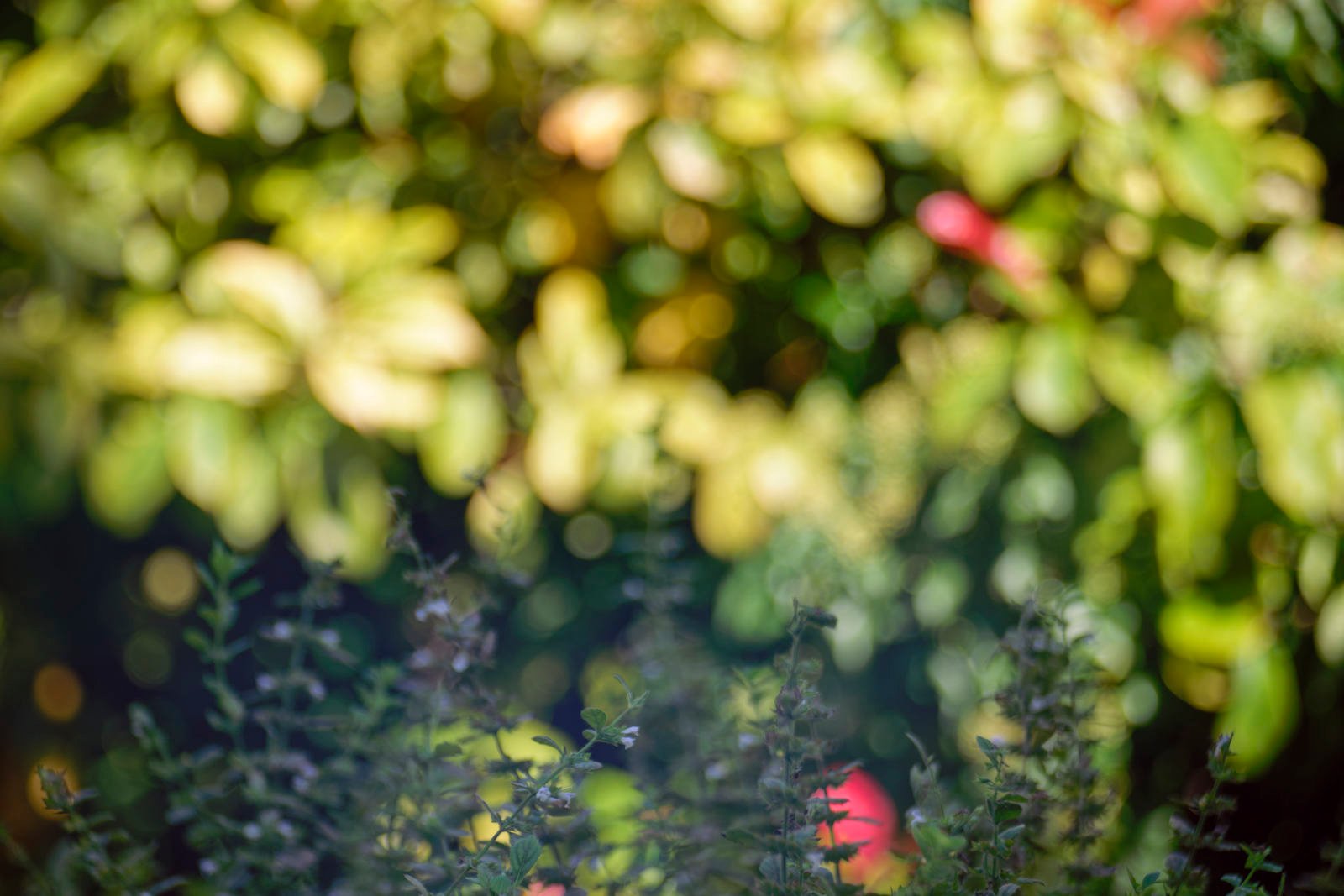
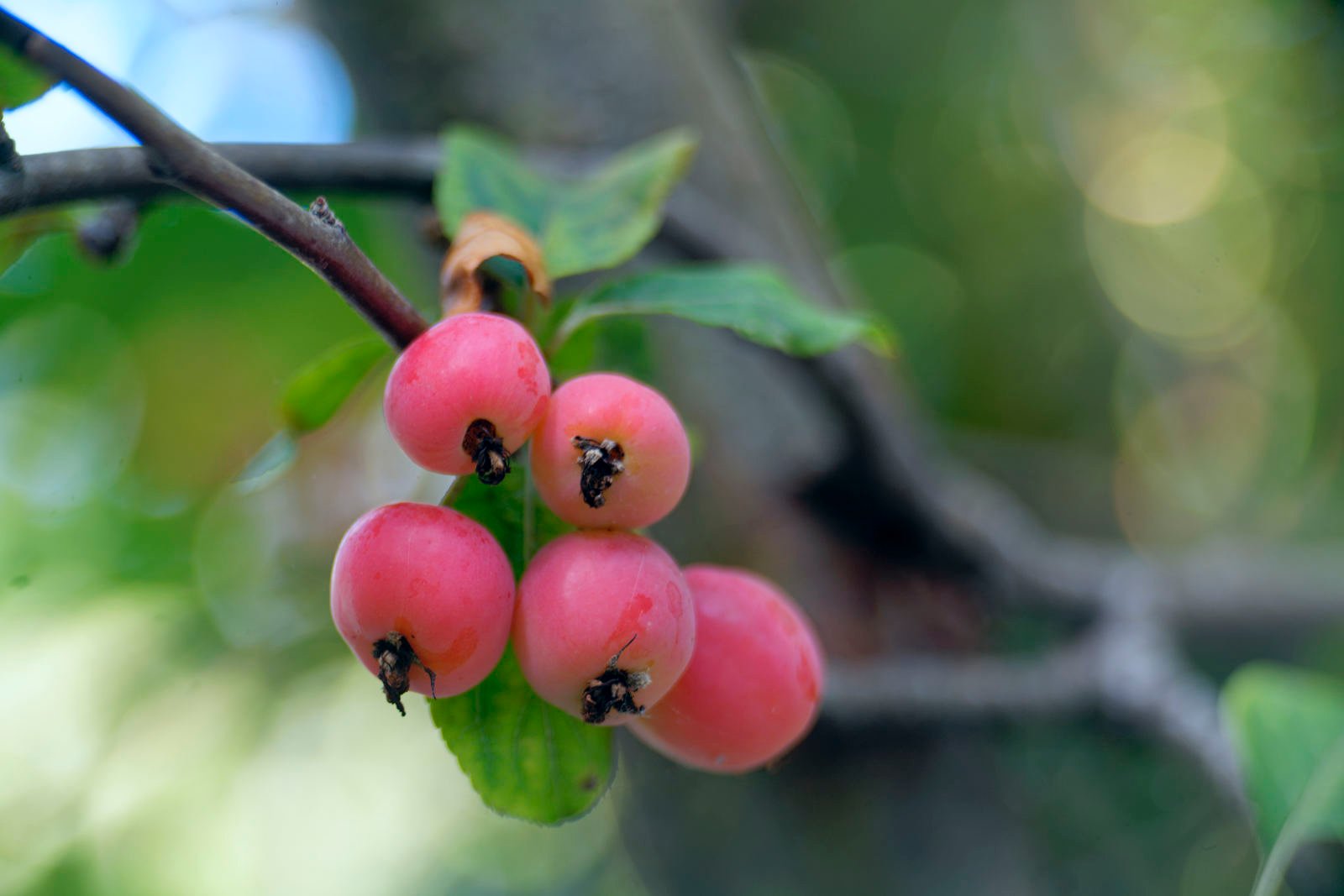

16:9 –
This is an excellent example of a slide projector triplet – as far as unconventionally soft lens can be considered suitable for image capture. After all, no triplet matches the optical quality of a well corrected lens with four or more elements, but within the realm of its peers this early Projection Ektanon delivers everything you want from a cheap lens with few drawbacks. Generally, slide projector lenses of this focal length are more desirable than the shorter plastic barrel: not only because the physics are more amenable to subject isolation, but because so few 85/2.8 lenses rise above the norm of spherical aberration and howlingly awful corners. This one is rather more serviceable.
It’s reassuringly hefty at 150g, though most of that weight is bakelite. The single coating is more effective than average for this period. Chromatic aberrations are unusually well-controlled, and there’s no barrel distortion. Compared with a similarly likeable PJ lens, the ready-threaded Cabin 100/3.2, the Ektanon has slightly better full-frame corners (Zone C), but a less crisp Zone A. Centrally-placed subjects have only the faintest hint of ‘glow’, though – and earn the Ektanon a score of 7.1 compared to the Cabin’s surprisingly effective 7.5 – right at the top of the ‘Soft’ grade, almost reaching Bronze level.
For video and stills where sharpness isn’t critical, but the rendering style is, the four-inch Ektanon has smooth, distraction-free bokeh full of soft, impressionistic smudges and thin-ringed bubbles. As you might expect, contrast and saturation are both low – which for most tasks is (arguably) no disadvantage, given the ease with which appropriate pizazz can be summoned in post. After correction, the look is more natural – even classically cinematic – than forcing a modern lens to open up its shadows and/or back off clipping its highlights. However, strong veiling flare is inevitable – which may or may not be desirable.